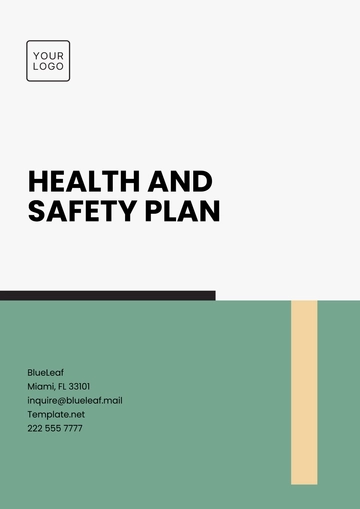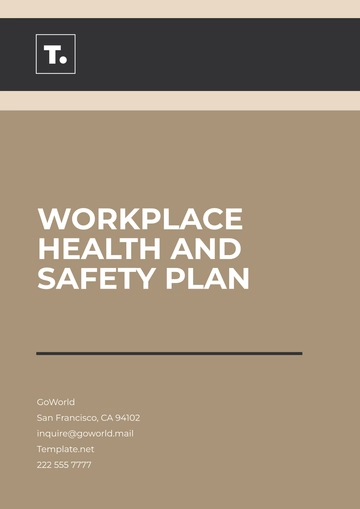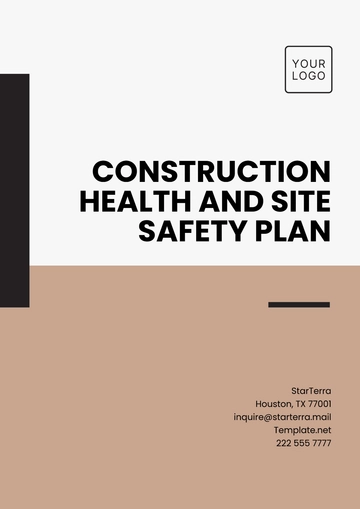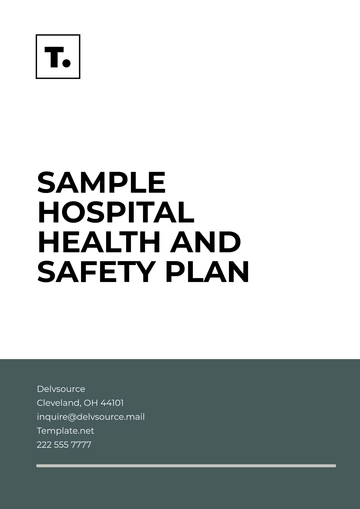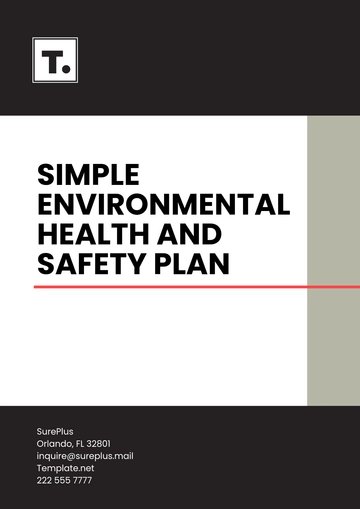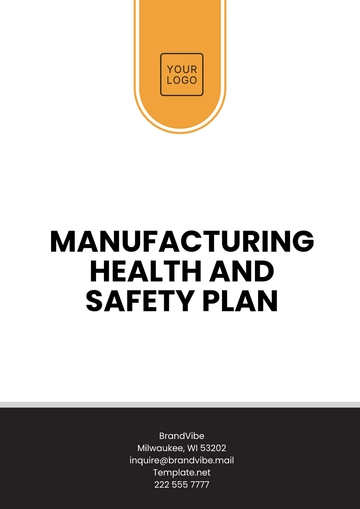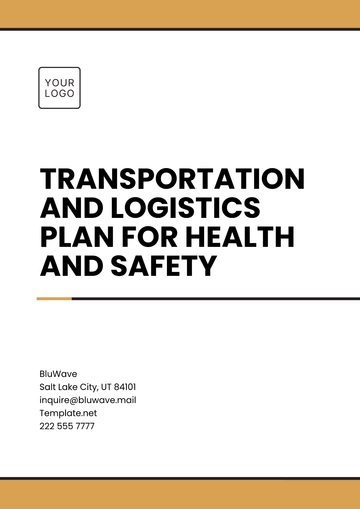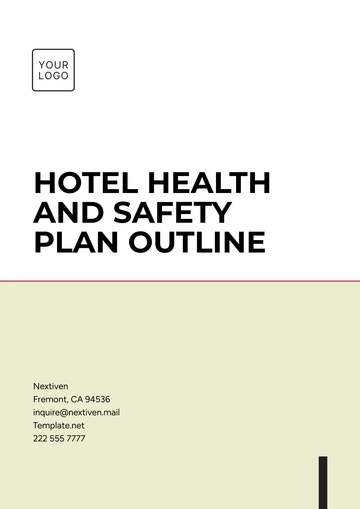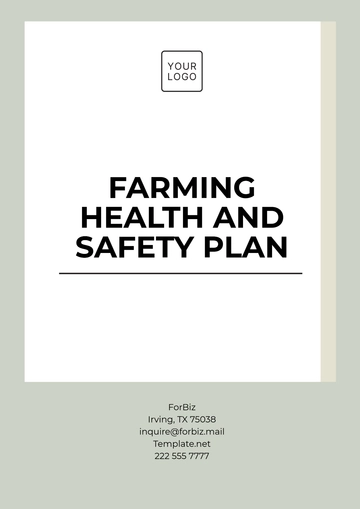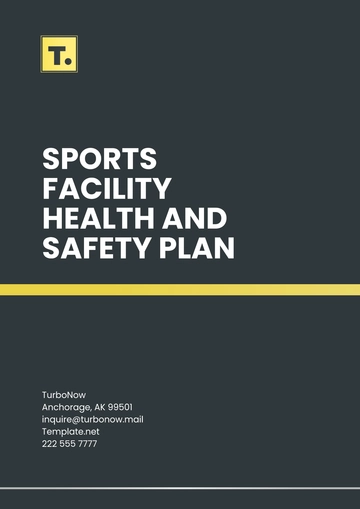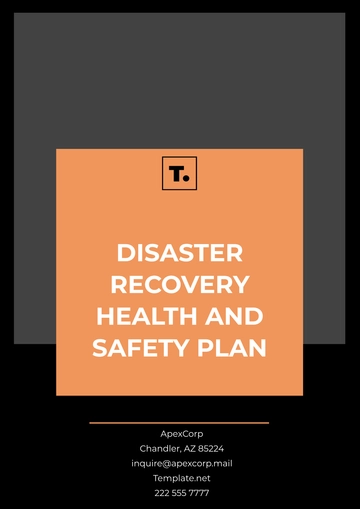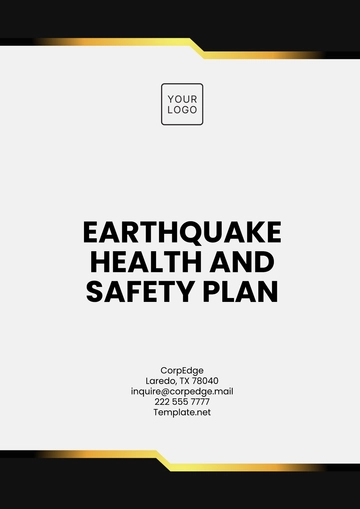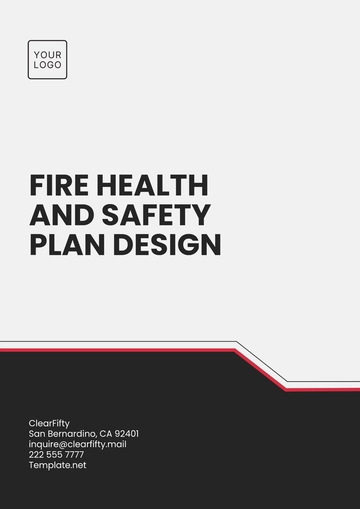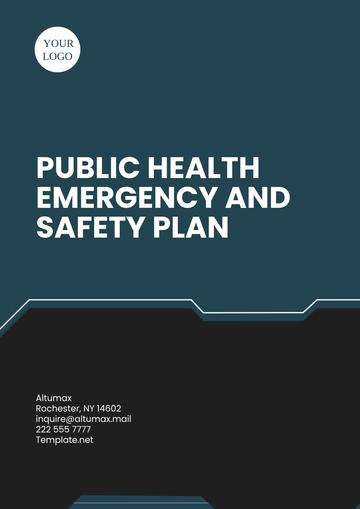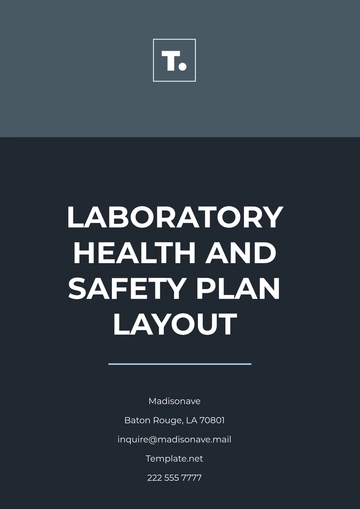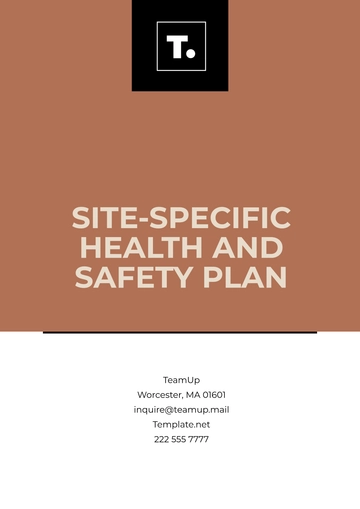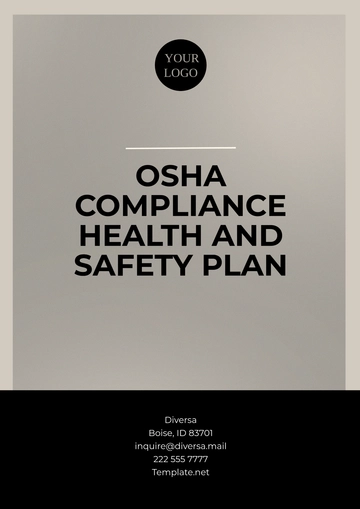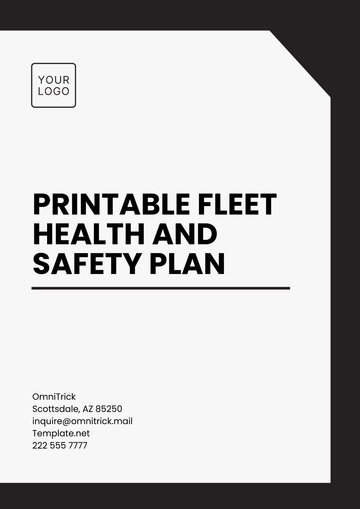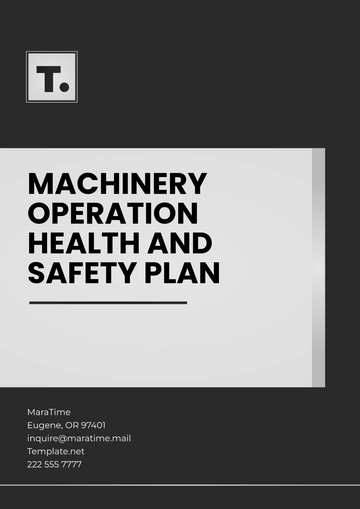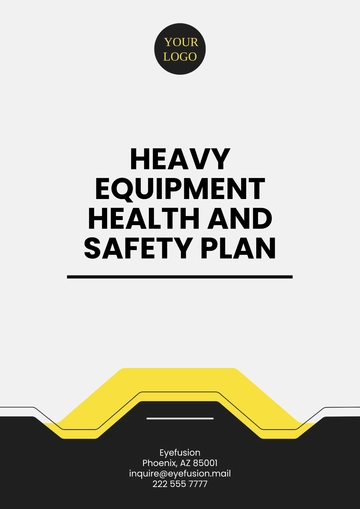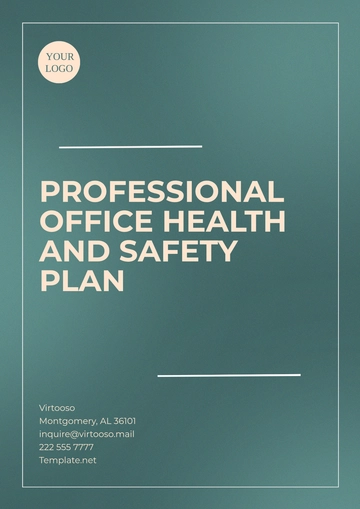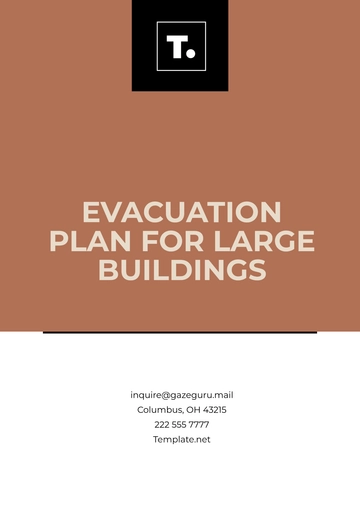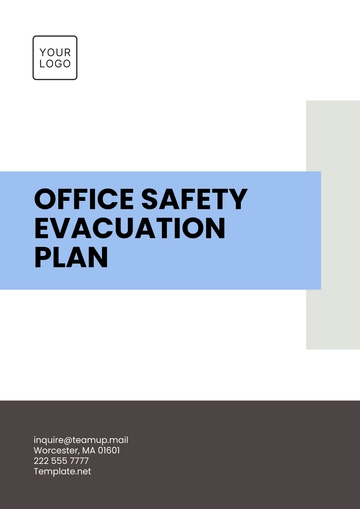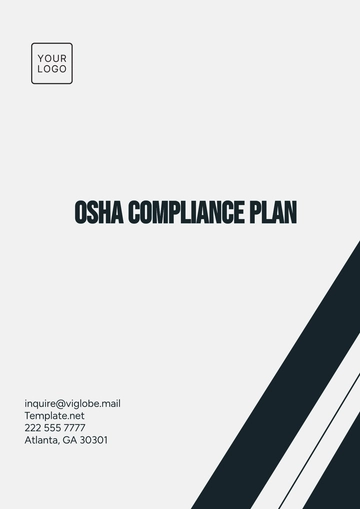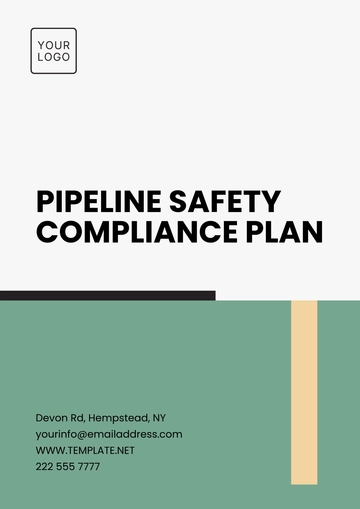Free Safety Improvement Strategy Plan
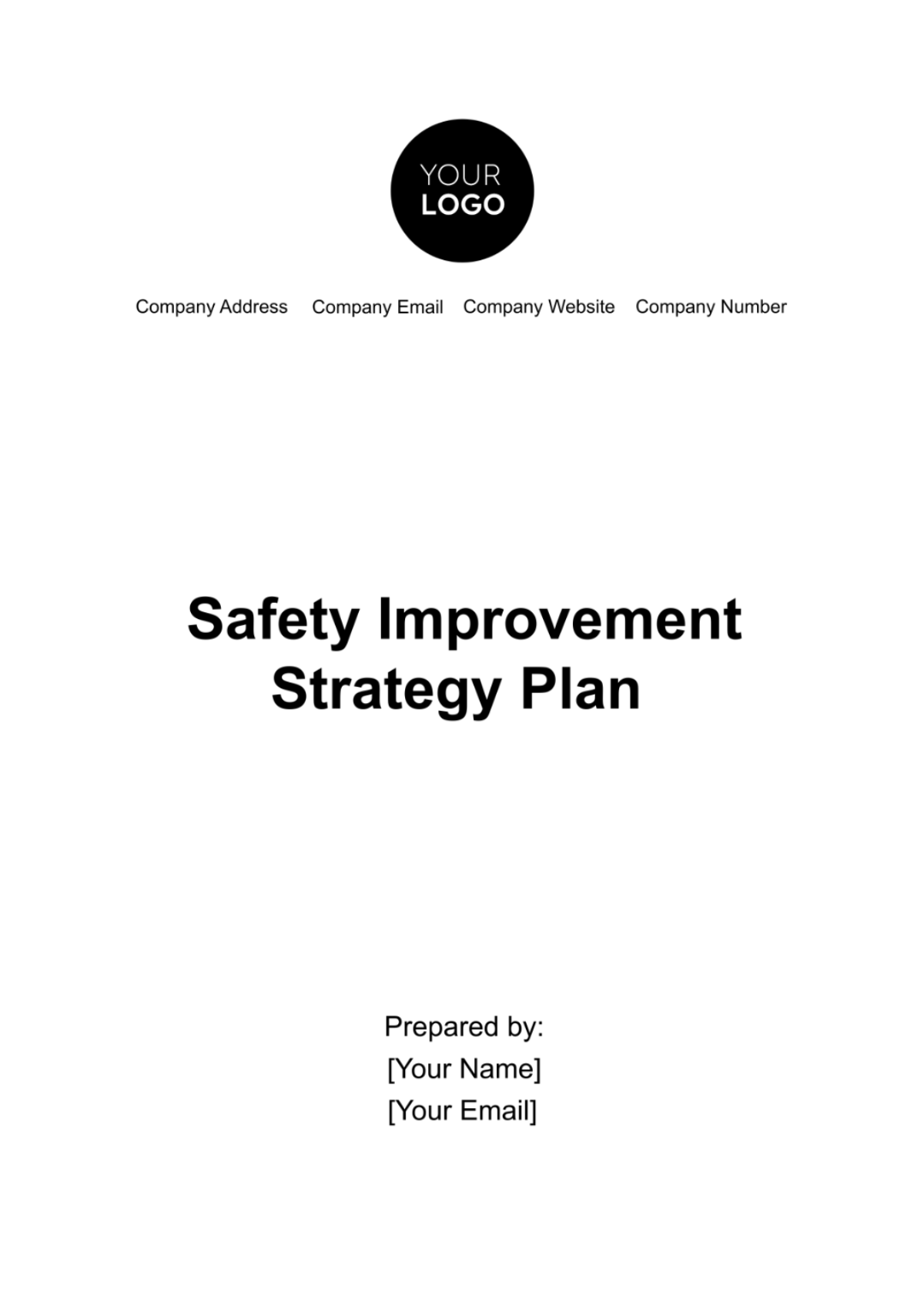
1. Introduction
The Safety Improvement Strategy Plan is a critical document for [Your Company Name], outlining a comprehensive approach to enhancing workplace safety, mitigating risks, and fostering a culture of health and safety awareness among all stakeholders.
1.1 Purpose
The primary purpose of this Safety Improvement Strategy Plan is to systematically improve the safety standards at [Your Company Name]. Recognizing that a safe workplace is fundamental to the well-being of our employees and the efficiency of our operations, this plan serves several key objectives:
Risk Identification: Conduct thorough assessments to identify potential safety hazards in the workplace, including physical, chemical, biological, and ergonomic risks. This process involves an examination of current workplace practices, environments, and the use of equipment and substances.
Preventive Strategy Development: Based on the identified risks, develop and implement preventive strategies. These include updating safety protocols, improving workplace design, introducing safer equipment, and enhancing emergency response procedures.
Safety Culture Promotion: Establish a robust safety culture by involving employees at all levels in safety initiatives. This includes regular training, safety workshops, and encouraging a mindset where safety is everyone's responsibility.
Regulatory Compliance: Ensure that all safety practices and procedures are in line with local, state, and federal regulations. Staying compliant not only reduces legal risks but also demonstrates our commitment to maintaining high safety standards.
Continuous Improvement: Implement a continuous improvement model for safety, where feedback mechanisms are in place to regularly assess the effectiveness of safety measures and make necessary adjustments.
1.2 Scope
The scope of this Safety Improvement Strategy Plan extends across all facets of [Your Company Name], encompassing:
All Personnel: Includes full-time and part-time employees, contract workers, temporary staff, and interns. Each individual, regardless of their role or duration of employment, is covered under this plan.
Various Departments: Encompasses all departments and operational areas within the organization. From front-line operations to administrative functions, the plan addresses safety in diverse work environments.
Visitors and External Parties: Ensures that visitors, including clients, vendors, and other external parties, are also considered in the safety protocols, particularly in areas like visitor management and emergency procedures.
Facilities and Equipment: Covers all physical locations and equipment used by [Your Company Name], ensuring they meet safety standards and are regularly inspected and maintained.
By covering these areas, the plan aims to create a holistic and inclusive approach to workplace safety, ensuring that all aspects of the organization's operations are conducted in a safe and responsible manner.
1.3 Document Approval
Approver’s Name | Title | Signature | Date |
[Your Name] | [Your Title] | [Month Day Year] |
This document is subject to review and approval by the designated authority within [Your Company Name]. The approval signifies a commitment to the objectives and the implementation of the Safety Improvement Strategy Plan.
2. Current Safety Status
2.1 Existing Safety Measures
[Your Company Name] has established a range of safety measures aimed at protecting the well-being of all personnel and visitors. These measures are a mix of policies, practices, and physical interventions designed to minimize risks. An overview of these measures along with an assessment of their effectiveness is provided below:
Safety Training Programs: Regular training sessions are conducted to educate employees on safety practices, hazard identification, and emergency procedures. Effectiveness is measured by the reduction in safety incidents post-training.
Emergency Response Plan: A comprehensive plan detailing the steps to be taken during emergencies like fires, natural disasters, and medical emergencies. Effectiveness is evaluated through regular drills and response times.
Personal Protective Equipment (PPE): Provision of appropriate PPE to employees, especially in high-risk areas. Effectiveness is assessed by the usage compliance rate and incident reduction in these areas.
Workplace Ergonomics: Implementation of ergonomic practices to prevent musculoskeletal disorders. Effectiveness is measured by employee feedback and reduction in related health complaints.
Health and Safety Committees: Active committees that regularly review and update safety practices. Their effectiveness is seen in the proactive identification and resolution of potential safety issues.
Regular Safety Audits: Conducted to ensure compliance with safety regulations and to identify areas for improvement. The success of these audits is reflected in the compliance rates and audit findings.
2.2 Identified Risks and Incidents
The following table provides a summary of identified risks and incidents within [Your Company Name]. This data is crucial for understanding the current safety landscape and for guiding future improvement efforts.
Risk Category | Description | Incident Count | Last Occurrence |
Workplace Accidents | Injuries occurring during operations | [1] | [August 13, 2050, 10:15 AM] |
Equipment Malfunctions | Failures or faults in machinery | ||
Chemical Hazards | Exposure to harmful substances | ||
Ergonomic Risks | Strains and injuries from poor ergonomics | ||
Fire and Electrical Risks | Risks of fire or electrical incidents | ||
Environmental Hazards | Hazards related to the work environment (e.g., air quality) |
Each row in the table should be filled with relevant data, including the nature of the risk, the number of incidents recorded, and the date of the last occurrence. This information is critical for prioritizing safety initiatives and allocating resources effectively. Regular updating of this table is necessary to track progress and emerging safety concerns.
3. Safety Improvement Goals
The Safety Improvement Goals section of the Safety Improvement Strategy Plan is integral to [Your Company Name]'s commitment to enhancing workplace safety. These goals are strategically divided into short-term and long-term objectives, each targeting specific areas of improvement. The short-term goals focus on immediate actions and quick wins that can be achieved within a shorter time frame, typically up to one year. Long-term goals, on the other hand, are more strategic and visionary, focusing on sustainable safety improvements over a longer period, generally spanning one to five years.
The establishment of these goals is based on the current safety status, identified risks, and incidents at [Your Company Name]. By setting clear, measurable, and achievable goals, the company aims to reduce safety incidents, improve compliance with safety standards, and cultivate a culture of safety within the organization.
3.1 Short-Term Goals
Short-term goals are critical for addressing immediate safety concerns and laying the foundation for more comprehensive safety improvements. They are often more tactical and can be implemented relatively quickly.
Goal Number | Description | Target Completion Date | Responsible Department |
Goal 1 | Conduct a comprehensive safety audit across all departments to identify current gaps in safety practices. | [Month Day Year] | Safety Department |
Goal 2 | Implement a new incident reporting system to streamline the process of reporting and responding to safety incidents. | [Month Day Year] | HR Department |
Goal 3 | Upgrade existing fire safety equipment and conduct fire safety training for all employees. | [Month Day Year] | Facilities Management |
3.2 Long-Term Goals
Long-term goals reflect the company's commitment to establishing a sustainable and robust safety culture. These goals are more strategic and may require cross-departmental collaboration and significant resource allocation.
Goal Number | Description | Target Completion Date | Responsible Department |
Goal 1 | Develop and implement a comprehensive wellness program focused on mental health and ergonomic practices. | [Month Day Year] | HR Department |
Goal 2 | Achieve a 30% reduction in workplace accidents and incidents through enhanced training and safety protocols. | [Month Day Year] | Safety Department |
Goal 3 | Attain industry-recognized safety certifications to benchmark [Your Company Name]'s safety standards against best practices. | [Month Day Year] | Quality Assurance |
These goals are not just milestones but are integral parts of [Your Company Name]'s journey towards a safer and healthier workplace. Regular review and adjustment of these goals will be necessary to align them with the evolving business environment and regulatory landscape.
4. Strategy for Improvement
This strategy encompasses several key areas: Policy Development, Safety Training, Provision of Safety Equipment and Tools, and Emergency Preparedness. Each of these areas plays a vital role in building a more secure and risk-aware environment. The objective is to not only address the current safety concerns but also to proactively prepare for future challenges.
4.1 Policy Development
Developing and implementing new safety policies is crucial for maintaining a safe workplace. The new policies will focus on areas where current practices are lacking or where there is room for significant improvement. The implementation process will involve:
Drafting new policies based on identified safety needs and regulatory requirements.
Review and approval by key stakeholders.
Communication of these policies across the organization.
Training and support for employees to understand and adhere to these policies.
Regular review and updates to the policies.
4.2 Safety Training
Training programs are essential to ensure that all employees are equipped with the knowledge and skills to maintain a safe working environment. The training strategy will include:
Development of a comprehensive training curriculum covering various safety topics.
Regular training sessions for new and existing employees.
Specialized training for staff in high-risk roles.
Assessment and feedback mechanisms to gauge the effectiveness of the training.
4.3 Safety Equipment and Tools
Providing the right equipment and tools is critical for the physical safety of the employees. The following table outlines the required safety equipment and tools, along with their purpose and estimated costs.
Equipment/Tool | Purpose | Quantity Needed | Estimated Cost [$000.00] |
Safety Helmets | Head protection in operational areas | [50] | [$5000.00] |
Protective Eyewear | Eye safety for lab and field work | [Quantity] | [$000.00] |
Fire Extinguishers | Fire safety in all departments | [Quantity] | [$000.00] |
First Aid Kits | Emergency medical response | [Quantity] | [$000.00] |
Safety Signage | Hazard warnings and safety information | [Quantity] | [$000.00] |
4.4 Emergency Preparedness
Emergency preparedness is key to effectively handling unexpected situations. This involves:
Developing a comprehensive emergency response plan detailing actions for various types of emergencies.
Regularly scheduled drills to ensure that all employees are familiar with emergency procedures.
Updating and maintaining emergency contact lists and evacuation routes.
Regular reviews and updates to the emergency plans based on new risks or changes in the workplace.
This multifaceted strategy aims to create a safer work environment at [Your Company Name], reduce the risk of incidents, and ensure a swift and effective response in case of emergencies.
5. Monitoring and Evaluation
To ensure the effectiveness of the safety strategies implemented at [Your Company Name], a robust Monitoring and Evaluation system is essential. This system will focus on two critical areas: Safety Audits and Incident Reporting. The objective is to regularly assess the safety measures in place and to respond promptly and effectively to any incidents. Continuous monitoring and evaluation are key to identifying areas for improvement and ensuring compliance with safety standards and regulations.
Monitoring and Evaluation Components
Component | Description | Details |
Safety Audits | Frequency and Scope: | - Quarterly audits for general safety - Annual comprehensive audit covering all safety aspects. |
Audit Team Composition: | - Safety Officer as the lead auditor - Representatives from each department - External safety consultant (annually). | |
Incident Reporting | Procedure for Reporting: | - Immediate reporting through a centralized incident management system - Anonymous reporting option for sensitive issues. |
Incident Analysis and Response Plan: | - Detailed analysis of each incident to identify root causes - Development of a response plan to prevent recurrence - Regular review meetings to discuss incidents and improvements. |
This table outlines the key aspects of both Safety Audits and Incident Reporting. Safety Audits will be conducted regularly, with different levels of depth, involving a diverse team that includes both internal and external safety experts. Incident Reporting, on the other hand, focuses on establishing a clear and efficient process for reporting safety incidents, analyzing them thoroughly, and developing effective response plans. This proactive approach to monitoring and evaluation is crucial in maintaining a safe working environment and fostering continuous improvement in safety practices at [Your Company Name].
6. Budget
For the effective implementation of the Safety Improvement Strategy Plan at [Your Company Name], a dedicated budget is essential. This budget will cover the estimated costs associated with the key components of the plan, including safety equipment, training programs, safety audits, and other miscellaneous expenses. The allocation of funds is carefully planned to ensure that all aspects of the safety strategy are adequately supported, thereby maximizing the impact of each investment in terms of safety enhancement.
Estimated Costs Breakdown
Item | Description | Estimated Cost [$000.00] |
Safety Equipment | Includes helmets, protective eyewear, fire extinguishers, first aid kits, and safety signage. | [$16,000.00] |
Training Programs | Development and execution of safety training programs, including specialized training for high-risk roles. | [$000.00] |
Safety Audits | Costs associated with conducting quarterly and annual safety audits, including external consultant fees. | [$000.00] |
Miscellaneous | Additional expenses such as updating safety signage, emergency preparedness supplies, and other unforeseen costs. | [$000.00] |
This table provides a detailed overview of the anticipated expenses related to the Safety Improvement Strategy Plan. It is essential to periodically review and adjust the budget to reflect any changes in the scope of the safety initiatives or unforeseen requirements. Adequate budgeting is crucial for ensuring that [Your Company Name] not only achieves its safety objectives but also maintains a continuous commitment to the well-being and safety of all its employees and stakeholders.
7. Implementation Timeline
Activity | Start Date | End Date | Responsible Person |
Policy Development | [Jan 4, 2050] | [Jan 18, 2050] | [Rick Smith] |
Training Rollout | [Month Day Year] | [Month Day Year] | [Name] |
Equipment Procurement | [Month Day Year] | [Month Day Year] | [Name] |
First Audit | [Month Day Year] | [Month Day Year] | [Name] |
8. Contact Information
[Your Company Name]
[Your Company Email]
[Your Company Website]
[Your Company Address]
[Your Company Phone Number]
[Your Social Media]
9. Approval and Revision
This document is subject to revision and requires re-approval annually or after significant organizational changes.
Approver’s Name | Title | Signature | Date |
[Your Name] | [Your Title] | [Month Day Year] |
This Safety Improvement Strategy Plan provides a comprehensive framework to ensure a safer working environment at [Your Company Name]. It involves the commitment and cooperation of all staff members to achieve the stated safety goals and maintain a culture of safety awareness within the organization.
- 100% Customizable, free editor
- Access 1 Million+ Templates, photo’s & graphics
- Download or share as a template
- Click and replace photos, graphics, text, backgrounds
- Resize, crop, AI write & more
- Access advanced editor
Introducing Template.net's Safety Improvement Strategy Plan Template. This editable and customizable tool empowers users to develop effective safety enhancement strategies. With our Ai Editor Tool, tailor the plan to specific organizational needs and regulatory requirements. Safeguard workplace well-being with ease using Template.net's innovative solution.
You may also like
- Finance Plan
- Construction Plan
- Sales Plan
- Development Plan
- Career Plan
- Budget Plan
- HR Plan
- Education Plan
- Transition Plan
- Work Plan
- Training Plan
- Communication Plan
- Operation Plan
- Health And Safety Plan
- Strategy Plan
- Professional Development Plan
- Advertising Plan
- Risk Management Plan
- Restaurant Plan
- School Plan
- Nursing Home Patient Care Plan
- Nursing Care Plan
- Plan Event
- Startup Plan
- Social Media Plan
- Staffing Plan
- Annual Plan
- Content Plan
- Payment Plan
- Implementation Plan
- Hotel Plan
- Workout Plan
- Accounting Plan
- Campaign Plan
- Essay Plan
- 30 60 90 Day Plan
- Research Plan
- Recruitment Plan
- 90 Day Plan
- Quarterly Plan
- Emergency Plan
- 5 Year Plan
- Gym Plan
- Personal Plan
- IT and Software Plan
- Treatment Plan
- Real Estate Plan
- Law Firm Plan
- Healthcare Plan
- Improvement Plan
- Media Plan
- 5 Year Business Plan
- Learning Plan
- Marketing Campaign Plan
- Travel Agency Plan
- Cleaning Services Plan
- Interior Design Plan
- Performance Plan
- PR Plan
- Birth Plan
- Life Plan
- SEO Plan
- Disaster Recovery Plan
- Continuity Plan
- Launch Plan
- Legal Plan
- Behavior Plan
- Performance Improvement Plan
- Salon Plan
- Security Plan
- Security Management Plan
- Employee Development Plan
- Quality Plan
- Service Improvement Plan
- Growth Plan
- Incident Response Plan
- Basketball Plan
- Emergency Action Plan
- Product Launch Plan
- Spa Plan
- Employee Training Plan
- Data Analysis Plan
- Employee Action Plan
- Territory Plan
- Audit Plan
- Classroom Plan
- Activity Plan
- Parenting Plan
- Care Plan
- Project Execution Plan
- Exercise Plan
- Internship Plan
- Software Development Plan
- Continuous Improvement Plan
- Leave Plan
- 90 Day Sales Plan
- Advertising Agency Plan
- Employee Transition Plan
- Smart Action Plan
- Workplace Safety Plan
- Behavior Change Plan
- Contingency Plan
- Continuity of Operations Plan
- Health Plan
- Quality Control Plan
- Self Plan
- Sports Development Plan
- Change Management Plan
- Ecommerce Plan
- Personal Financial Plan
- Process Improvement Plan
- 30-60-90 Day Sales Plan
- Crisis Management Plan
- Engagement Plan
- Execution Plan
- Pandemic Plan
- Quality Assurance Plan
- Service Continuity Plan
- Agile Project Plan
- Fundraising Plan
- Job Transition Plan
- Asset Maintenance Plan
- Maintenance Plan
- Software Test Plan
- Staff Training and Development Plan
- 3 Year Plan
- Brand Activation Plan
- Release Plan
- Resource Plan
- Risk Mitigation Plan
- Teacher Plan
- 30 60 90 Day Plan for New Manager
- Food Safety Plan
- Food Truck Plan
- Hiring Plan
- Quality Management Plan
- Wellness Plan
- Behavior Intervention Plan
- Bonus Plan
- Investment Plan
- Maternity Leave Plan
- Pandemic Response Plan
- Succession Planning
- Coaching Plan
- Configuration Management Plan
- Remote Work Plan
- Self Care Plan
- Teaching Plan
- 100-Day Plan
- HACCP Plan
- Student Plan
- Sustainability Plan
- 30 60 90 Day Plan for Interview
- Access Plan
- Site Specific Safety Plan
